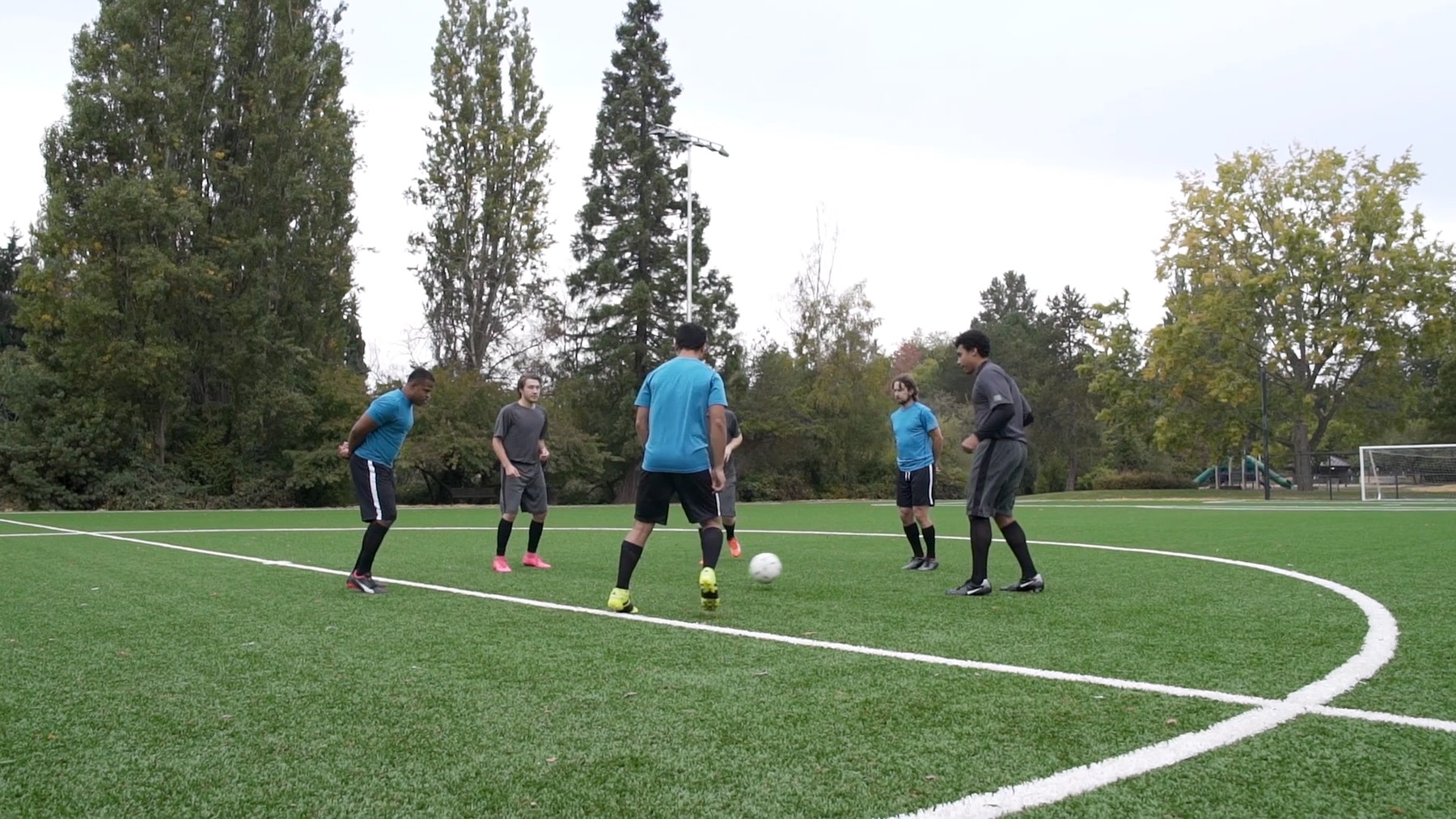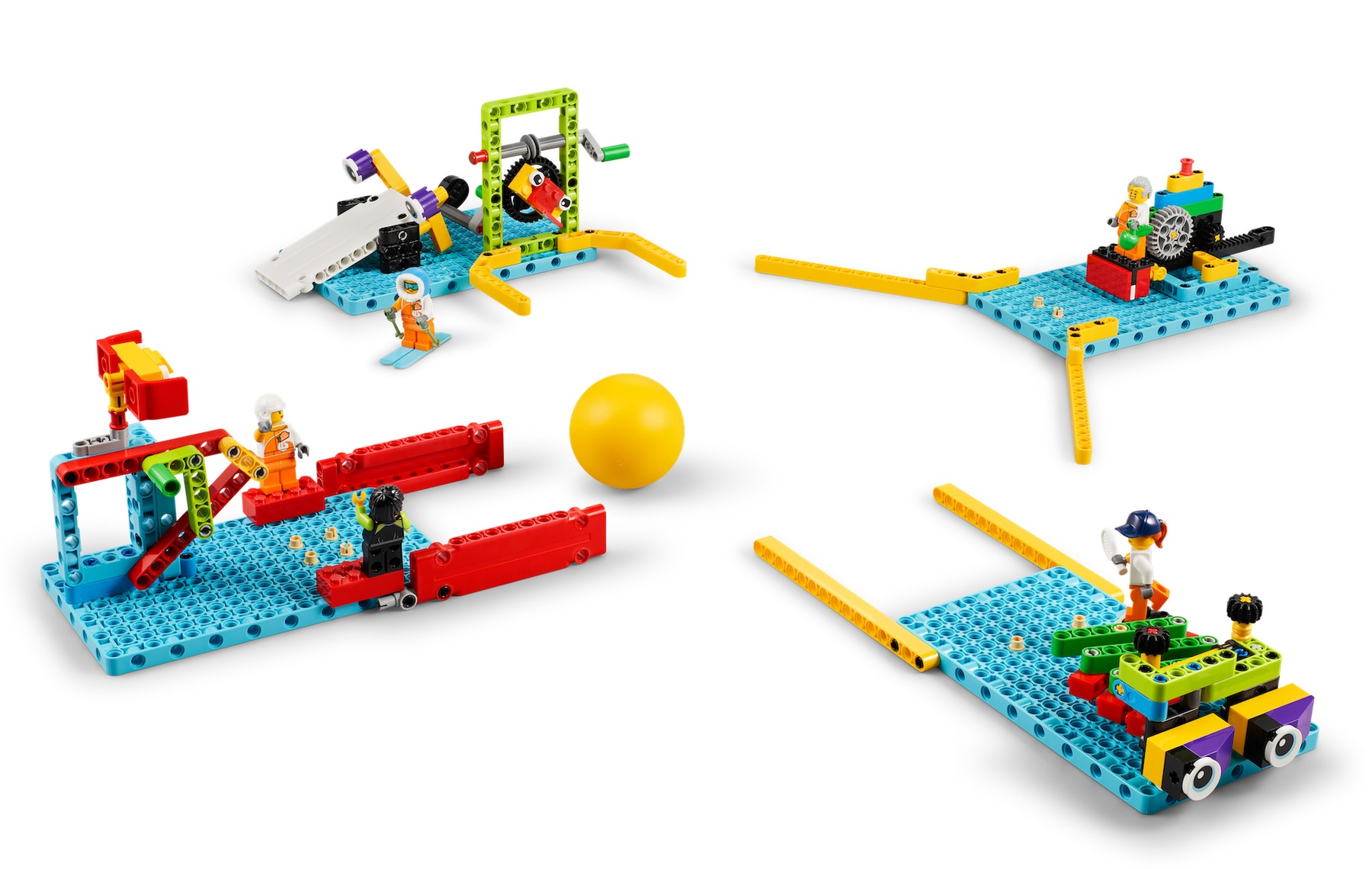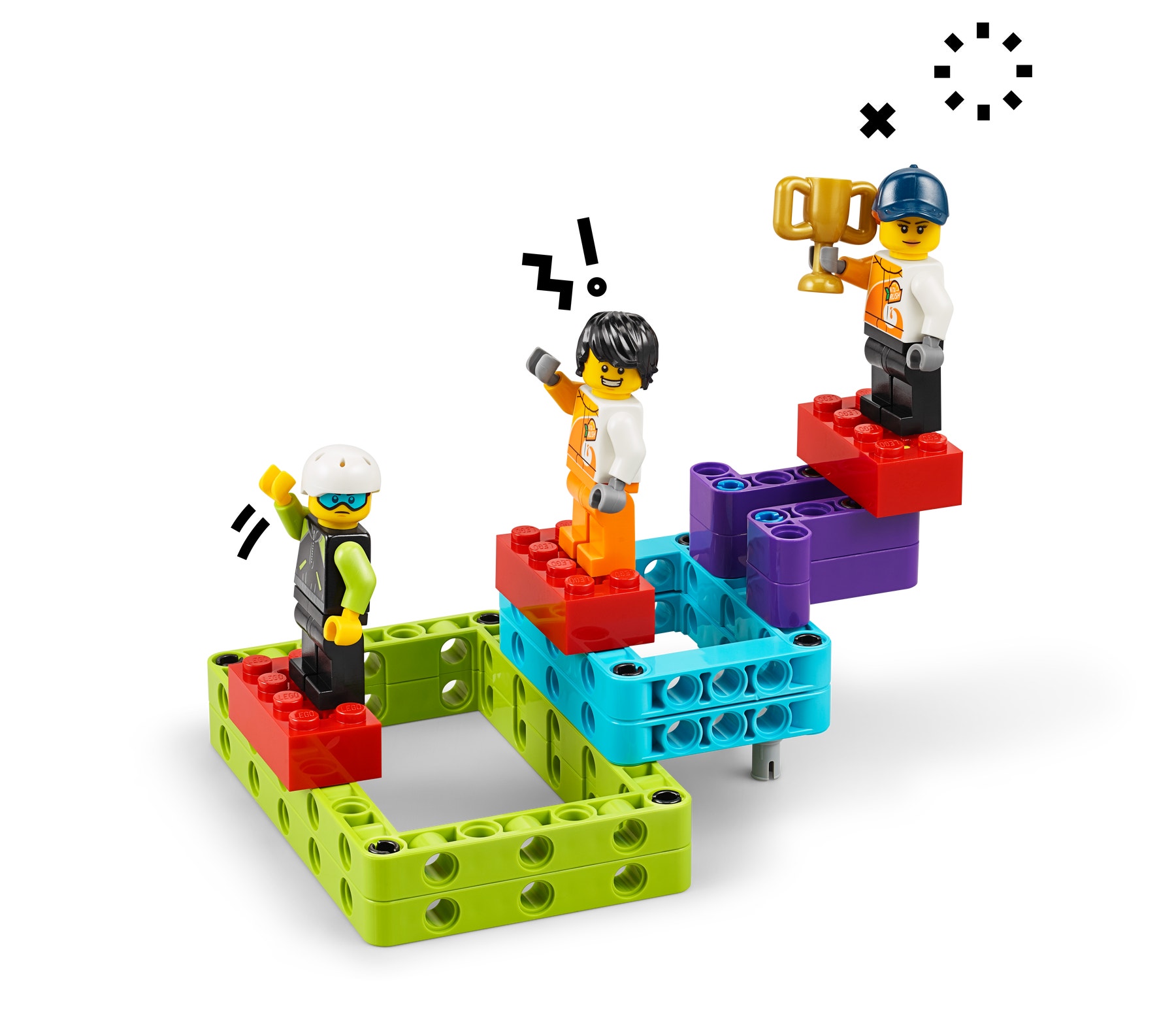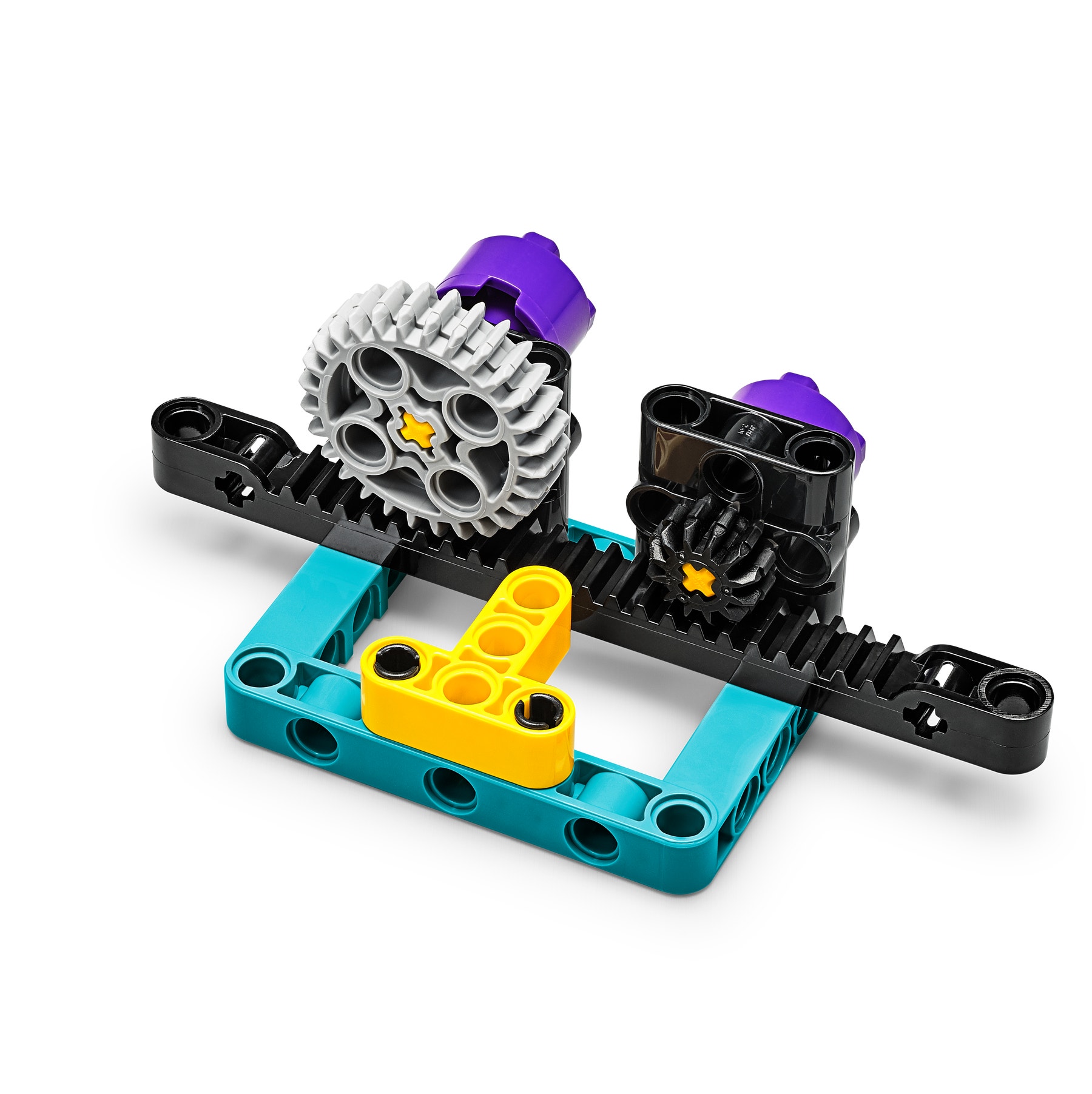Pass the Ball
How well can you work together to pass a ball across a sports field? Can your team score the winning goal?
This lesson will help familiarize your students with the LEGO® Education BricQ Motion Prime Set. We recommend taking some time before the lesson to show your students how the elements are sorted, and to establish some ground rules for keeping the sets neat and organized.

Prepare
- Review the online student material. Use a projector to share this material with your students during the lesson.
- Make sure that you've covered the relevant concepts (i.e., cause and effect, systems, inputs, processes, and outputs) in an earlier lesson.
- Consider the abilities and backgrounds of all of your students. Differentiate the lesson to make it accessible to everyone. See the Differentiation section below for suggestions.
Engage
(Whole Class, 5 Minutes)
- Watch the student video here, or access it via the online student material.

- Facilitate a quick discussion about the forces that help soccer players pass the ball from one player to another.
- Ask questions, like:
- What skills do soccer players need in order to pass a ball around the field? (The two most important skills are passing and receiving the ball.)
- What force is required to make the ball move? (Soccer players use a push force with their foot to generate forward momentum to kick the ball. They also use their foot to slow and stop the ball when they receive it.)
- Tell the students that they'll be building a mechanism that can pass a ball, and then work together as a team to pass a ball from one side of the room to the other.
- This can be done as a whole class or smaller groups.
- Explain that they won't be given building instructions but should instead use the pictures on pages 2 - 3 in their building instructions books as guidance. Tell them that each group:
- Can copy the models in the pictures on pages 2 – 3 of building instructions book, embellish them, or invent their own designs.
- Each group should aim to make at least two ball passer and catcher models.
- Distribute a set to each group.
Explore
(Small Groups, 30 Minutes)
- Have the students work in pairs to build a mechanism that can pass and catch a yellow ball.
- There aren't specific building instructions for this lesson. However, students can refer to the pictures on pages 2 - 3 of building instructions book for inspiration. They're also welcome to design their own models.
- You can find support for building in the Tips section below.
- Once the students have finished building, ask them to test their models.

Explain
(Whole Class, 5 Minutes)
- Gather your students together to share what they’ve built.
- Ask questions, like:
- What did your model have to do in order to make the ball move to the next player? (It had to have a mechanism that could make the ball move in a straight line.)
- Which of the inspiration models helped you create an effective mechanism?
- How did it work?
- How did the mechanism pass the ball?
- How did it slow the ball down?
Elaborate
(Whole Class, 5 Minutes)
- If time allows, ask your students to try combining two mechanisms to make a more complicated ball passer.
- Allow time for the students to disassemble their models, sort the bricks back into the trays, and clean up their workstations.
Evaluate
(Ongoing Throughout the Lesson)
- Give feedback on each student's performance.
- Facilitate self-assessment.
- Use the assessment rubrics provided to simplify the process.
Observation Checklist
- Measure your students’ proficiency in describing the forces at work in their models.
- Create a scale that matches your needs. For example:
- Needs additional support
- Can work independently
- Can teach others
Self-Assessment
- Have each student choose the brick that they feel best represents their performance:
- Green: With some help, I can describe the forces at work in my model.
- Blue: I know I can describe the forces at work in my model.
- Purple: I can describe and explain the forces at work in my model.
Peer-Feedback
- Encourage your students to assess their peers by:
- Using the brick scale above to score each other's performance
- Presenting their ideas and giving constructive feedback

Tips
Model Tips
The inspiration pictures on pages 2 - 3 of the building instructions book show eight models that can be used as inspiration. Note: There aren't enough elements to build all of these models at the same time. Building on one of the blue panels will help students to scale their models.
- Gear train
- Rack and pinion
- Four-bar linkage
- Bevel gears
- Ratchet lever
- Worm gear
- Universal joint
- Scissor mechanism

Differentiation
Simplify this lesson by:
- Assigning each group specific obstacles to build
- Suggest starting with the four-bar linkage or scissor mechanism; these mechanisms can easily push something to make it move
Increase the difficulty by:
- Having the students try to make their ball move in a curve
- Choosing a random element and challenging your students to find a way to use it in a model
Extensions
(Note: This will require additional time.)
To incorporate math skills development, ask your students to calculate the gear ratios, measure the linkage movements, or perform other calculations to help them understand how one force translates to a different force.
CCSS.MATH.CONTENT.6.RP.A.1
1:1 Hybrid Learning
Download the Personal Learning Kit lesson plan from the hybrid learning resources.
Teacher Support
Students will:
- Become familiar with using this set to build models
- Explore how different mechanisms can convert an input into an output with a different motion
- Make predictions about how the forces acting on an object can change its motion
- LEGO® Education BricQ Motion Prime Set (one for every two students)
- NGSS MS-PS2-2
- NGSS MS-ETS1-2
- ISTE: 4c, 6c, 7c
- CCSS.ELA-LITERACY.SL6.4
Lesson extension
- CCSS.MATH.CONTENT.6.RP.A.1